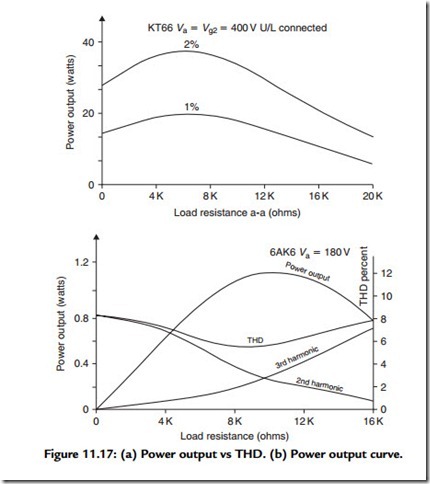Effect of Output Load Impedance
This is yet another area in which there is a conflict in design requirements, between output power and output stage distortion. Figure 11.17(a), shows the output power
given for 1 and 2% THD values by a push–pull pair of U/L-connected KT88s in relation to the anode to anode load impedance chosen by the designer. These data are courtesy of the GEC2 Since the distortion can also alter in its form as a function of load impedance, Figure 11.17(b) shows the way these circuit characteristics change as the load resistance changes. The figures given for a single-ended 6AK6 output pentode are due to Langford-Smith.
Related posts:
Troubleshooting Control Circuits
Objective tests on induction motor:
The Transistor
Electric Motor Manual – INSTALLATION METHODS – Identification diagrams speed troubleshoo...
Zener Diodes:Voltage regulation with Zener Diodes
Electric Motor Manual – SELECTION AND APPLICATION – Calculating torque and heat build-up...
HOW MICROCOMPUTERS WORK:CONCEPTS AND DEFINITIONS
Operation of the Synchronous Motor
INTRODUCTION TO INDUSTRIAL CONTROL
Introduction to Room Acoustics
Generator characteristic:Compound-wound Generator
Digital Audio Fundamentals:Why Digital?
AUDIO AND VIDEO SYSTEMS - NOISE REDUCTION
SYNCHRONOUS GENERATORS:THE PHASOR DIAGRAM OF A SYNCHRONOUS GENERATOR
